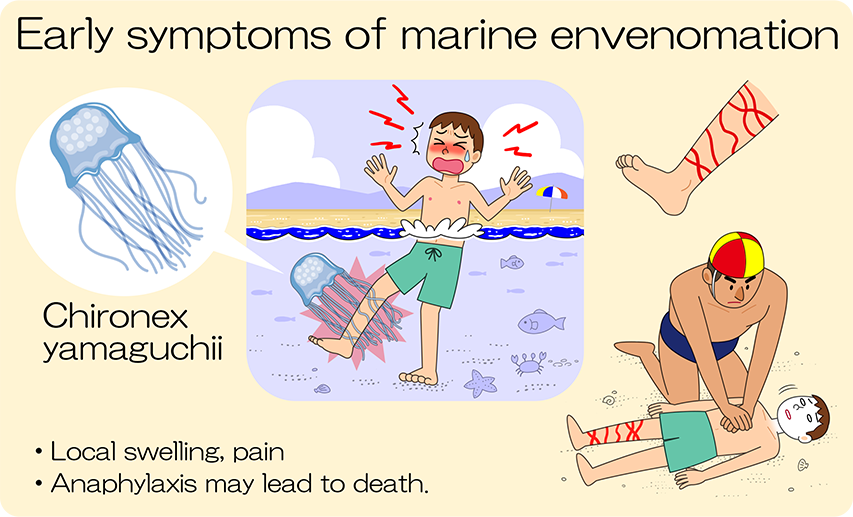Jellyfish
Appearance
The diameter of the hood is approximately 10–14 cm, and the body length can reach approximately 1.5m with tentacles extended. This jellyfish possesses seven tentacles attached to four arms
Epidemiology
Jellyfish appear in large numbers in swimming areas, particularly inlets and beaches where waves are subdued. Several jellyfish sting cases have been reported in the literature and recently, Hifumi et al. comprehensively described the clinical characteristics of jellyfish stings in Japan. One urban emergency department in Hawaii experiences approximately 20 jellyfish sting cases annually. The annual number of cases in Japan is relatively small compared with the annual incidence of approximately 100,000 in Florida and eastern Australia.
Venom activity and clinical symptoms
Box jellyfish venom has hemolytic and neurotoxic effects and causes skin necrosis and hypotension.

Diagnosis
No definite diagnostic criteria exist. Diagnosis of jellyfish stings is based on either the patient’s history or positive identification of the responsible jellyfish presented by the patient. Severe stings result in systemic envenomation, which may result in Irukandji syndrome and/or anaphylaxis, and most often require hospital admission.
Treatment
Applying vinegar to any tentacles remaining on the skin prior to removal can deactivate unfired nematocysts. After vinegar application, the tentacles may be gently removed. Cardiac arrest and cardiogenic shock are appropriate indications for antivenom administration; earlier administration of antivenom may neutralize the venom.
Prevention
Box jellyfish are a common hazard, as they are translucent and difficult to see through the water’s surface. Swimming within an area protected by anti-jellyfish barrier netting is recommended.
References
Hifumi T, et al. SN Comprehensive Clinical Medicine (2020) 2:2288–2292
Blog 2020.09.05 Review of marine organism bite wounds (including serum therapy) was created.